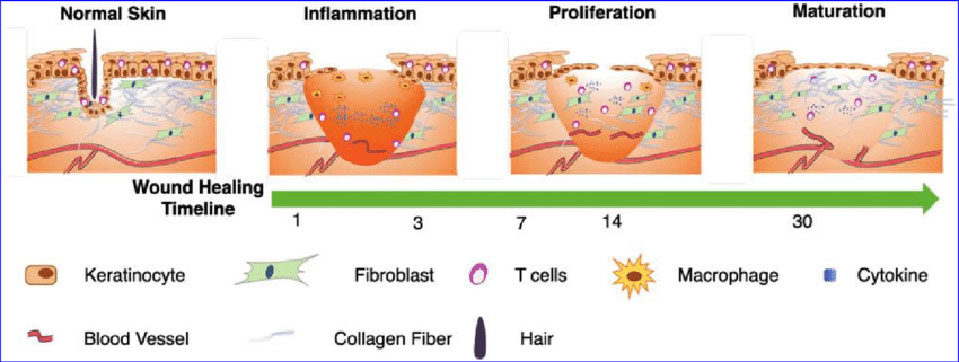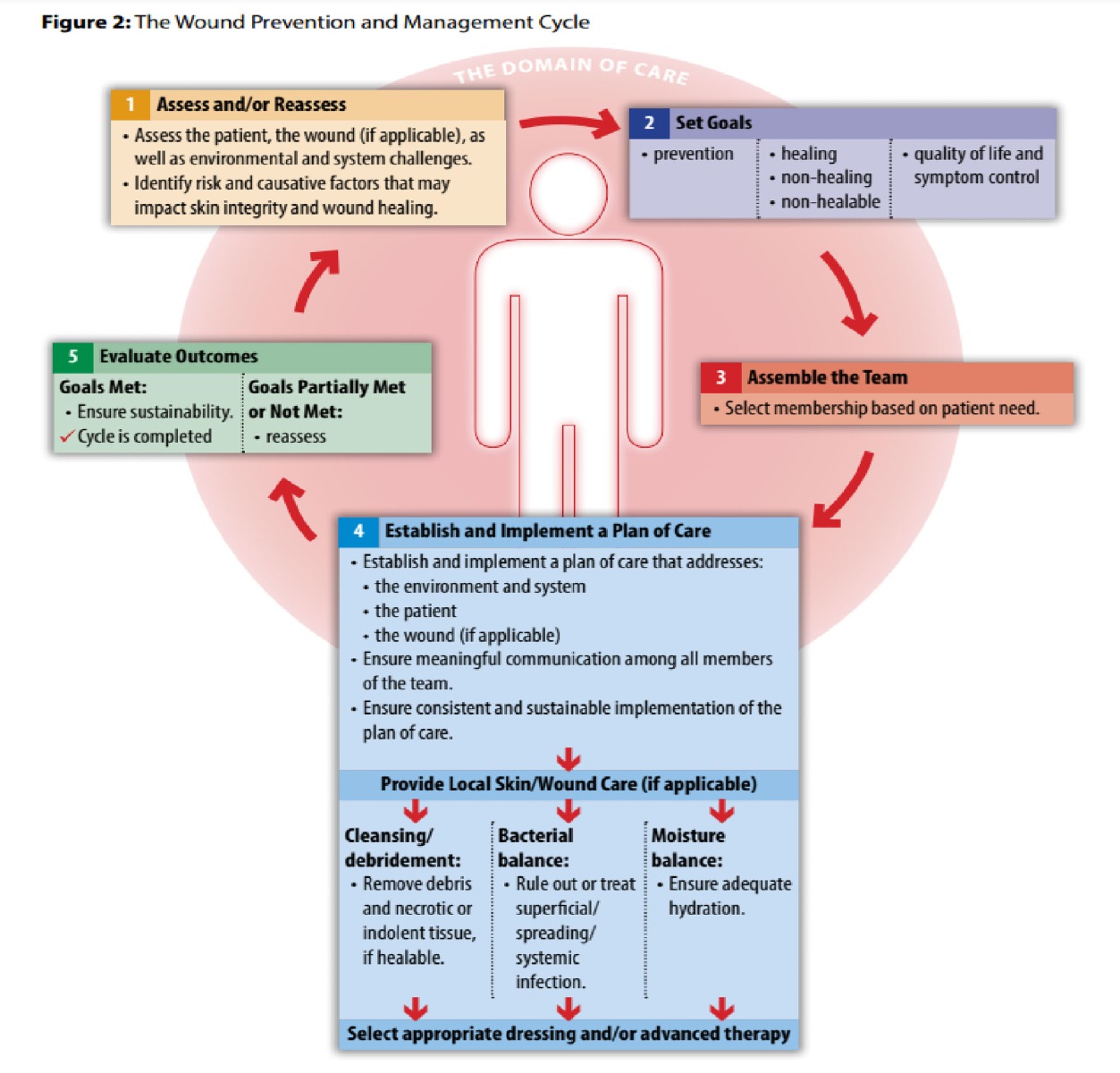Topical Lovastatin in Wound Care
Topical Lovastatin in Wound Care
By: Karan Modi
PharmD Candidate 2022
CareFirst Specialty Pharmacy
Wound Healing
Wound healing is a complex sequence of events that can be broadly divided into two stages:
- Haemostasis: it is the rapid response to physical injury and is necessary to control bleeding. It involves the following components: Vasoconstriction, Platelet response, Biochemical response
- Tissue Repair & Regeneration: involves 3 phases:
- Inflammation phase (0-4 Days) the bodys normal response to injury. This phase activates vasodilatation leading to increased blood flow causing heat, redness, pain, swelling and loss of function. Wound exudate may be present and this is also a normal body response.
- Proliferation phase (2-24 Days) the time when the wound is healing. The body makes new blood vessels, which cover the surface of the wound. This phase includes reconstruction and epithelialisation. The wound will become smaller as it heals.
- Maturation phase (24 days-1 year) the final phase of healing, when scar tissue is formed. The wound is still at risk and should be protected where possible.

Image from https://www.researchgate.net/
Wound classification:
| Acute Wound | Chronic Wound |
|---|---|
| - is any surgical wound that heals by primary intention or any traumatic or surgical wound that heals by secondary intention. An acute wound is expected to progress through the phases of normal healing, resulting in the closure of the wound. | - is a wound that fails to progress healing or respond to treatment over the normal expected healing time frame (4 weeks) and becomes "stuck" in the inflammatory phase. This pathologic inflammation is due to a postponed, incomplete or uncoordinated healing process. Wound healing is delayed by the presence of intrinsic and extrinsic factors including medications, poor nutrition, co-morbidities or inappropriate dressing selection. |
Wound prevention and management cycle:

Image from https://www.woundscanada.ca
Role of lovastatin:
Lovastatin is an antihyperlipidemic agent that is usually prescribed to treat high blood cholesterol and reduce the risk of cardiovascular disease. Recent studies suggest that statins may have potential as novel treatments for diverse conditions, ranging from sepsis and inflammatory diseases to chronic wounds and bone fractures.
Topical Lovastatin/Cholesterol is a well-tolerated treatment for porokeratosis that targets its initiation and progression, according to the Journal of American Academy of Dermatology.
Topical lovastatin exerts its anti-inflammatory effect by inhibiting the release of C-reactive peptide, chemokines, cytokines and adhesion molecules, which may make it a powerful addition to the dermatologic anti-inflammatory medication arsenal. Along with reducing inflammation, lovastatin has the potential to heal chronic wounds by decreasing farnesyl pyrophosphate, facilitating vascular relaxation, promoting neovascularization and reducing bacterial load. A better understanding of its effects at the cellular and molecular level in skin is necessary for their future use.
Lovastatin case studies:
- A study investigating the efficacy of lovastatin as an antifibrotic agent after glaucoma filtration surgery (GFS) in a rabbit model demonstrated lovastatin significantly improved bleb survival and reduced intra-ocular pressure (IOP) compared with the control group. Lovastatin has been shown to inhibit TGF-β–induced CTGF transcription, α-SMA expression, and myofibroblast transdifferentiation in human Tenon fibroblasts in vitro. This study extended in vitro study to show that lovastatin exerts its antifibrotic effect after GFS in a rabbit model.
- Another study focusing on exisiting classes of drugs in the market with different indications analyzed the treatments for wound healing, showed application of a lovastatin-loaded tissue engineering scaffold, which offers the advantage of mimicking ECM with integrated drug delivery capacity, was able to increase wound healing rate by enhancing eNOS and skin blood flow within and around the wounded skin.
Conclusion:
Lovastatin is known as a lipid-lowering drug but is also proven to be effective against certain skin conditions because of its anti-inflammatory, immunomodulatory, antioxidant, and possibly, anti-cancer effects. Above studies show lovastatin has potential to be the first-line therapy agent in the setting of acute and chronic wound care. Although more concrete studies/data are required to establish its place in wound healing therapy.
Because lovastatin is currently only available in tablet form, topical lovastatin requires compounding. CareFirst Specialty Pharmacy is able to compound topical lovastatin to a patients specific medical needs; for more information on compounded products available from CareFirst Specialty Pharmacy, please visit https://www.cfspharmacy.pharmacy/lovastatin.
References:
- Orsted H, Keast D, Forest-Lalande L, et al. Best practice recommendations for the prevention and management of wounds. Wounds Canada. https://www.woundscanada.ca/docman/public/health-care-professional/bpr-workshop/165-wc-bpr-prevention-and-management-of-wounds/file. Accessed June 1, 2021.
- Park JH, Yoo C, Kim YY. Effect of lovastatin on wound-healing modulation after glaucoma filtration surgery in a rabbit model. Investigative Ophthalmology & Visual Science. April 2016;57:1871-1877. https://doi.org/10.1167/iovs.15-19003.
- Spampinato SF, Caruso GI, De Pasquale R, et al. The Treatment of Impaired Wound Healing in Diabetes: Looking among Old Drugs. Pharmaceuticals. 2020; 13(4):60. https://doi.org/10.3390/ph13040060.
- Stojadinovic O, Lebrun E, Pastar I, et al. Statins as potential therapeutic agents for healing disorders. Expert Rev Dermatol. 2010;5(6):689-698. https://cardiacos.net/wp-content/uploads/ArticulosMedicos/2010/2010-Statins-as-Potential-Therapeutic-Agents-for-Healing-Disorders-printer-friendly.pdf.
- Wound assessment and management. The Royal Children’s Hospital Melbourne. https://www.rch.org.au/rchcpg/hospital_clinical_guideline_index/Wound_assessment_and_management/. Accessed June 1, 2021.
- https://www.researchgate.net/figure/Schematic-illustration-of-the-timeline-of-T-cells-involved-in-wound-healing-This_fig5_334619714.



Comments